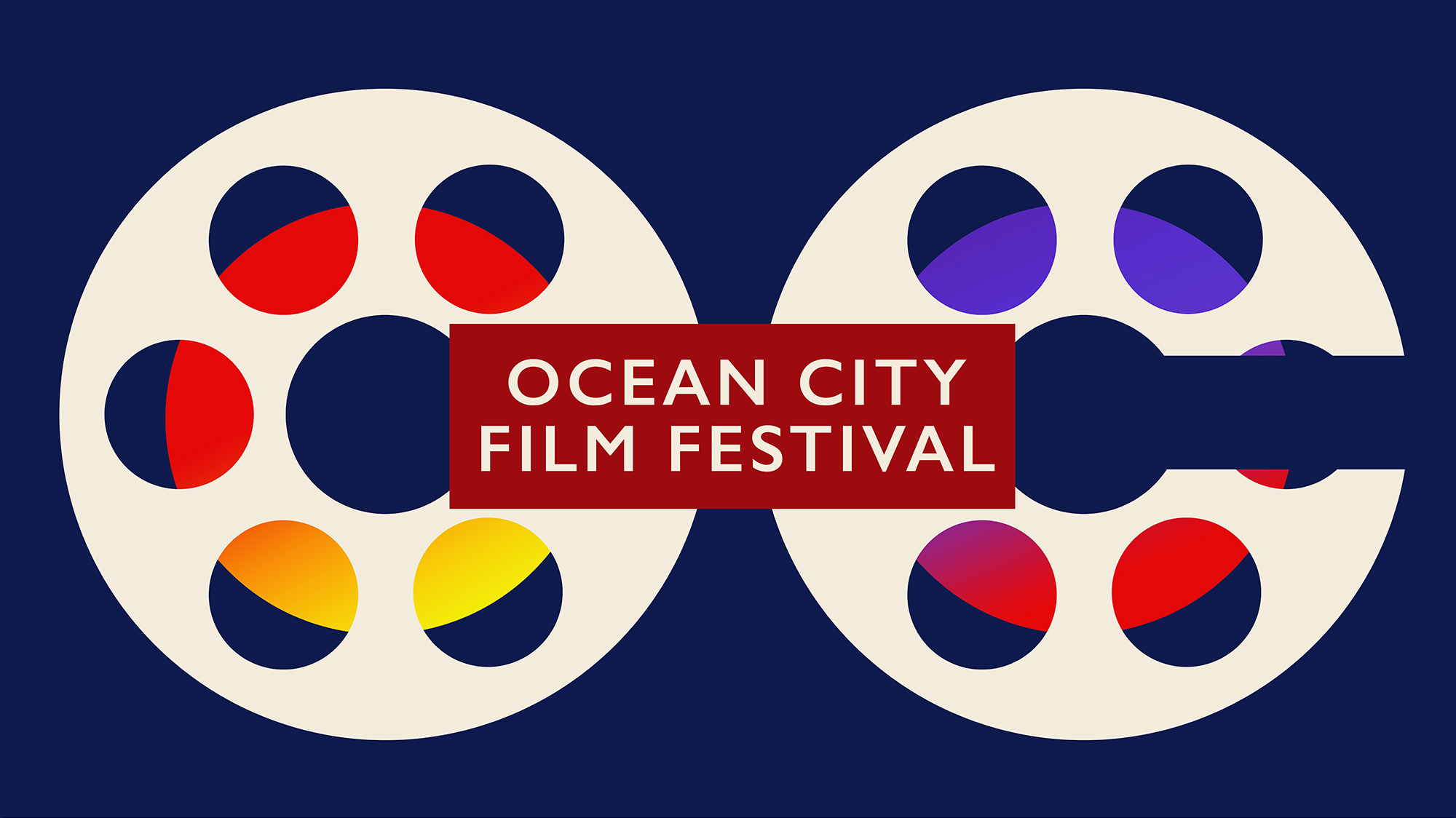
24 Aug Open Road, Empty Soul: New Hollywood and the Road Film by: Alex Abbott
“I asked the painter why the roads are colored black
He said, “Steve, it’s because people leave
And no highway will bring them back”- David Berman
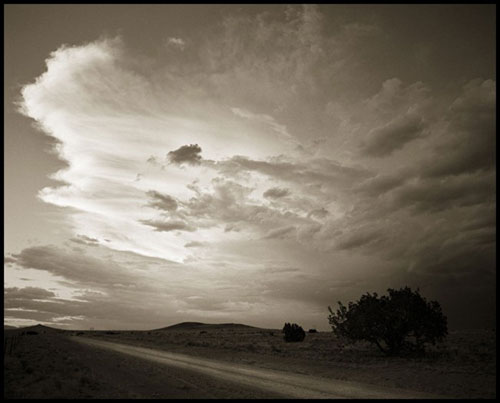
Waldo Road, New Mexico 14 1/2 x 18 inch, Palladium Print, edition of 10, July 1989 (Photographer: David Michael Kennedy)
Arthur Penn’s Bonnie and Clyde, the anti-authority road film about the titular bank robbers, reigned in the New Hollywood movement in 1967, along with The Graduate, with its European arthouse influences, stylistic violence, and Nouvelle Vague mise en scène. Later, Easy Rider completely changed the studio structure for the next half-decade. Produced by the filmmaker-driven iconoclast company BBS and then distributed by the then-old-fashioned management company Columbia Pictures, it signaled the creative and financial fertility of the movement: making 60 million on a 400,000 dollar budget. Every studio wanted to make it rich on their own Easy Rider, which led to the rise of the New Hollywood road film. Filmmakers wanted to be their own Jack Kerouac, creating their own On the Road for the late 60s and early 70s counterculture– to portray the wandering, ennui-filled tone of the Beats but update it with a dirty realism that reacts to a contemporary dissatisfaction accentuated by Vietnam and Nixon.
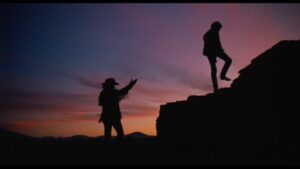
Wyatt and Billy explore in the sunset
With the distance of an odd 50 years, much of Easy Rider’s cultural impact might feel antiquated. In Albert Brooks’ biting 1985 comedy Lost In America, Linda and David Howard quit their cushy upper-middle-class jobs and take their savings to explore America in an RV in their self-proclaimed pursuit to continue the spirit of their youth— to live “like they do in Easy Rider.” Brooks views the state of the counter-culture’s dreams in 1985 negatively, thinking that Easy Rider’s message is, at best, a far-off dream and, at worst, an empty signifier. However, when revisiting the actual text of Easy Rider, it is brazenly experimental— an atmospheric, impressionistic film with maybe the thinnest of narrative tissue.
Fonda and Hopper’s characters (Wyatt and Billy, named after old west heroes Wyatt Earp and Billy The Kid) wander with their motorcycles (à la horse-backed steed) from California to New Orleans, smoking dope and dropping acid. Along the hazy drug-fueled trip, they pick up hitchhikers and face trouble from the straight-laced mono-culture. Outside of the narrative vignettes of hippie communes, a Brakhage-esque New Orleans acid trip, and an alcoholic ACLU lawyer (Jack Nicholson), the film is composed primarily of Lazlo Kovacs’ pastoral American southwest landscapes. The general airy quality of Easy Rider is likely due to the volatility of the production, primarily due to star/director Dennis Hoppers’ unstable set presence and insistence on editing the film to a gargantuan three hours. But the final product is a film that captures the zeitgeist of the 60s counter-culture in its prime moments, the final moments of optimism right before the hippie fallout of the Cielo Drive murders. There is a uniquely American quality captured in Easy Rider: moments of beauty, love, fear, and violence unfolding in beautiful land. But it is all accentuated by this wistful sense that this is all temporary, whether it be culture or geography. Near the film’s end, Wyatt ambiguously opines on said temporality to Billy at a campfire: “We blew it.” Then they die, then the credits roll. Despite the film’s still rebellious aesthetics: with a bit of distance and a clear eye, who is to say whether Billy and Wyatt would someday be like Linda and David Howard in their RVs? Soderbergh even visits this motif in The Limey, with Fonda playing a sell-out hippie turned big-time record producer.
Five Easy Pieces serves as an almost immediate foil to Easy Rider, moving Jack Nicholson to lead actor rather than supporting role and featuring the similarly naturally lit photography of Lazlo Kovacs. Instead of counter-culture, the film is about the inherent tension between the working and upper class– with Nicholson’s Robert Dupea finding himself completely dissatisfied and displaced with either. Dupea was born into America’s upper crust, a piano prodigy who left the comforts of upper-class life to work in a rural California oil field.

Robert stares at himself in a bathroom mirror
Initially, Robert comes across as a bawdy, lowbrow man. This perception changes during a traffic jam on the highway, where he impulsively and manically plays the piano in the back of a flatbed truck with maestro precision. The film’s narrative focuses mainly on Robert’s trip up the Pacific coast to his ailing father. The road here takes a transitory motif, transitioning from showing Robert’s physically laboring blue-collar work to the stuffy aristocracy of his familial origin.
This juxtaposition of Robert’s dissatisfaction can best be encapsulated in two scenes. First: in the film’s most famous scene, Robert humiliates a waitress because he can’t substitute his order. This scene escalates in him sardonically telling her to hold the chicken with his order “between your knees.” Second: much later, in his father’s lavish mid-century house, his wife Rayette (Karen Black) is treated to patronization by a group of house guests which causes Robert to explode, calling out the condescending, snobbish nature of bourgeois individuals and culture. Robert seems to disdain anyone, rich or poor, signaling his psychological and class alienation. In the film’s conclusion, he abandons his wife at a rest stop after his trip. Robert learns nothing. He receives no understanding from his father and then fades into the Pacific Northwest pines and fog– left to drift as he torches his old life(s). On the more independent end of American Cinema in this era, Barbara Loden’s excellent 1970 road film Wanda is the feminist foil to the wounded machismo of Five Easy Pieces– substituting the Pacific Northwest for industrial Pennsylvania, with Loeden having Wanda coming to a similar morose conclusion as Robert.
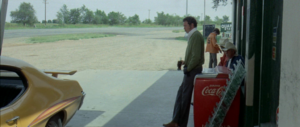
GTO enjoys a Coca-Cola at the Gas Station
Monte Hellman’s Two-Lane Blacktop (1971) was explicitly sanctioned by Universal in the aftermath of Easy Rider and then subsequently left to obscurity by Hollywood– even after Variety published the screenplay, prematurely claiming it to be the “film of the year” (then didn’t review it upon its release). Of the films in the essay: Two-Lane Blacktop arguably has the most commonality with European Arthouse Cinema. It is difficult not to compare the film’s austere minimalism to the stylings of Bresson and Antonioni. James Taylor and Dennis Wilson (yes, the musicians), whose dragstrip racer characters are left unnamed beyond Driver and Mechanic, have a similar blankness to the non-actors of Bresson’s films. They give almost an anti-performance aided by counter-cultural novelist and screenwriter Rudolph Wurlitzer’s script, which adds reverie-type existentialism to the content (much like the tone Wurlitzers script gave to Sam Peckinpah’s film Pat Garrett and Billy the Kid later in 1973).
Warren Oates, known as GTO, gives the film its most naturalistic and conventional performance. He’s a man with a new muscle car and presumably a mid-life crisis. GTO challenges the mechanic, the driver, and the girl (Laurie Bird) to a cross-country race, but the race and its parameters disintegrate into nothingness as the narrative continues. In the film’s final dragstrip race, the actual film stock burns abruptly as the credits begin. It’s hard to pin what Two-Lane Blacktop’s message is, but ultimately the film walks away from answers– easy or hard, leaving the audience with a sense of melancholic yearning rather than a morality play.
Jerry Schatzberg’s Scarecrow (1973) is probably the film of this essay with the most commonality to Keuroac’s work. The film consists of two drifters– Max (Gene Hackman) and Lion (Al Pacino). Max is a grizzled and short-tempered man with round John Lennon spectacles and a gruff paranoid attitude– unafraid to get into bar fights or bark at people who look at him the wrong way. Lion seems less confident. He’s smaller (Pacino is 5’6) and looks to Max for protection and guidance. The two do not initially hit it off upon hitchhiking perpendicularly in wine country but begin to strike up a bond as they hitchhike across the country. They dream about opening a car wash with Max’s savings in a bank in Pittsburgh. Due to Max’s volatile temperament, it is uncertain how much truth there is to the influx of savings.
Cinematographer Vilmos Zsigmond (friends with fellow Hungarian DP Lazlo Kovacs) gives the American landscapes a beautiful ugliness. Every actor’s face, even Hackman and Pacino, has a rough contour and lack of glamor. Scarecrow seems mostly for cataloging the lives of people forgotten about and the places that they live. Most of the film takes in various locales west of Texas but East of California. A collection of grimy diners, bars, and motels are where Max and Lion consort, with positive and negative results, with the locals and other outcasts while they aren’t on the road.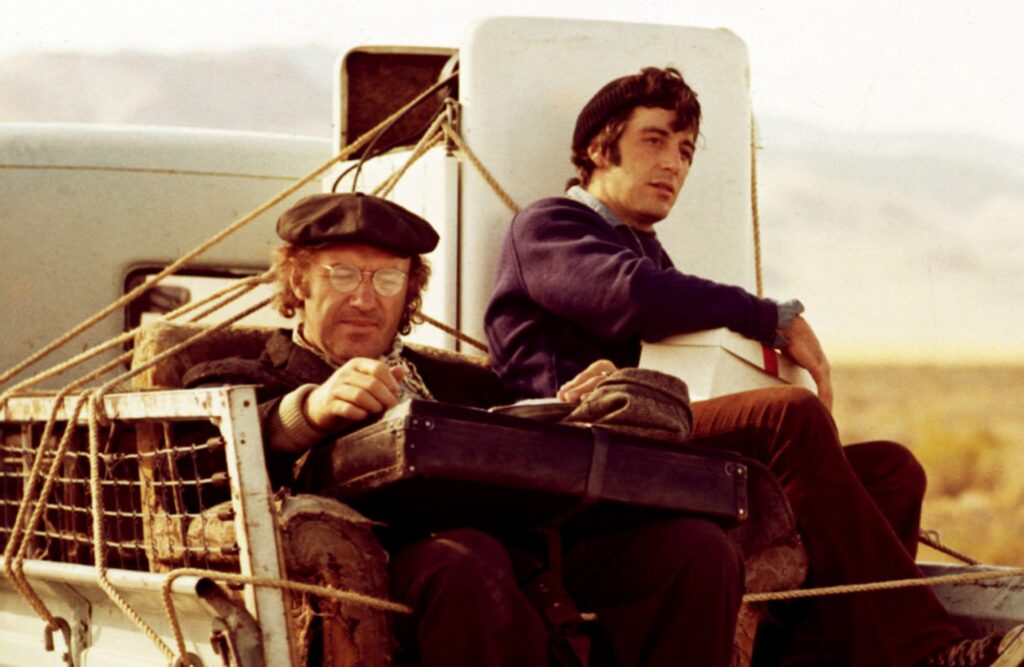
Scarecrow, ultimately, stops short of Pittsburgh, building to Lion’s confrontation with his wife over a payphone in Detroit. Lion, balking on waltzing into her house, calls across the street to apologize for walking out, to which his wife lies. As his son plays in the background, she tells him she aborted his son he has never met. Lion’s Catholic guilt and anger towards the situation lead to a catatonic episode, leaving him hospitalized. Max promises to stick to their plan and open a car wash. In the final scene, the audience sees Max scrounging for change from his boot as he buys a round-trip ticket to Pittsburgh– the future left entirely uncertain.
Robin Wood posits that Scarecrow (and buddy dramas of this nature from this era) represents the 70s as a desire to replace “the broken,” and Lion’s paternal narrative arc serves as a microcosm of said desire. It wouldn’t be much of a stretch to conclude that Wood’s thesis about Scarecrow pertains to each of these films. Beyond the physical road, the commonality between these films is a strong sense of dissatisfaction, but it would be reductive to call them outright nihilistic. Each film contends that America is a geographically diverse country with a wide open, freeing infrastructure. A road, as a concept or motif, can be a liberator from dissatisfactory conditions or social unrest. But these same roads can only liberate for so long and are so expansive that there’s a sense of emptiness, especially when there isn’t a place to call home. If New Hollywood is an honest distillation of the attitudes of the social milieu of its time, then these films are as much a time capsule as a piece of cinema. Of course, cinema is not monolithic to attitudes, but these films are the canvas of dreamers. There’s a reason why J Hoberman called it “The Dream Life,” but as all dreams tend to do, it ended.
